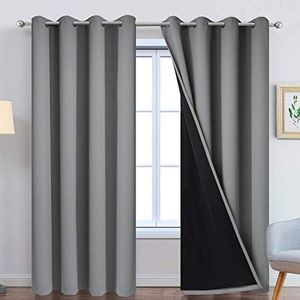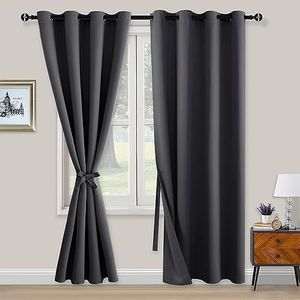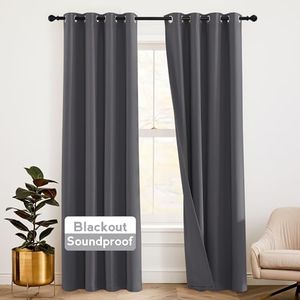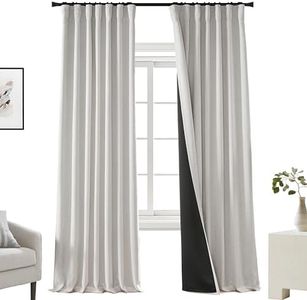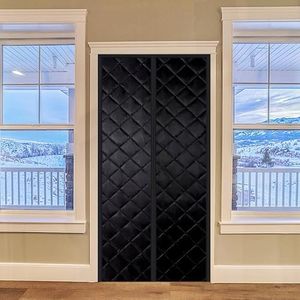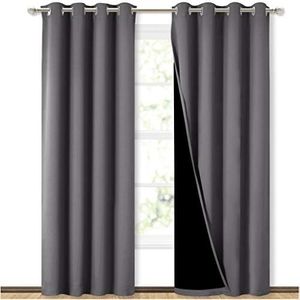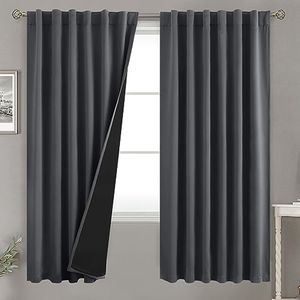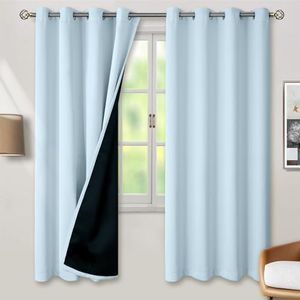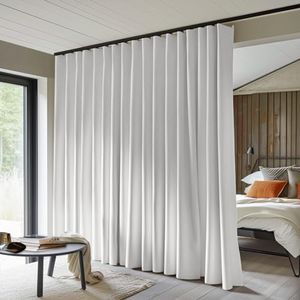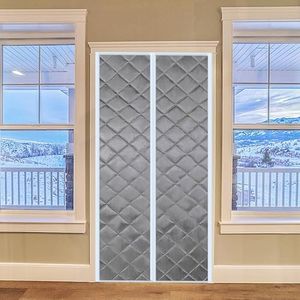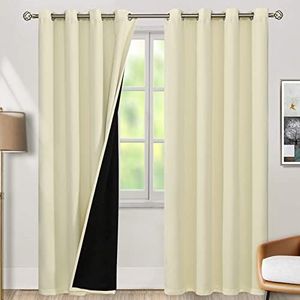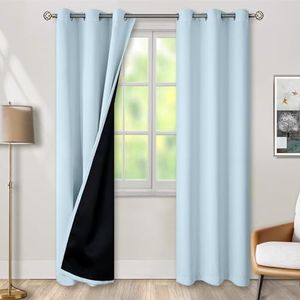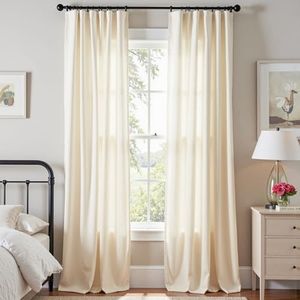We Use CookiesWe use cookies to enhance the security, performance,
functionality and for analytical and promotional activities. By continuing to browse this site you
are agreeing to our privacy policy
10 Best Noise Cancelling Curtains
From leading brands and best sellers available on the web.Buying Guide for the Best Noise Cancelling Curtains
When choosing noise-cancelling curtains, it's essential to focus on the factors that influence their sound-blocking effectiveness, practicality, and fit for your space. While these curtains can't completely eliminate noise, they can significantly reduce outside sounds, especially in busy urban environments. Understanding the main specifications will help you make a selection that's both functional and attractive for your room.Material ThicknessMaterial thickness refers to how heavy and dense the curtain's fabric is. Thicker curtains are usually better at blocking and absorbing sound because they provide a more substantial barrier. Lightweight, thinner curtains offer minimal noise reduction. When choosing, think about how noisy your environment is: very thick curtains are ideal for high-traffic, noisy areas; medium-thickness works for moderate noise; thin curtains are best for mild disturbances.
Multi-Layer DesignA multi-layer design means the curtain is made up of two or more layers of material sewn together. More layers generally enhance noise reduction because each layer absorbs and blocks more sound waves. Single-layer curtains are lighter and easier to handle but offer less noise reduction. If you need strong noise blocking, look for curtains with at least a double layer; for lighter noise, a single layer may be enough.
Curtain Size and CoverageCurtain size and coverage are about how well the curtain covers your window or doorway. Wider and longer curtains that extend well beyond the frame and reach from ceiling to floor are more effective at reducing sound leaks. If your space has large or unusually shaped windows, make sure you measure carefully and choose a curtain that's wide and tall enough to create a good seal. For maximum noise control, always pick a size that overlaps the window edges.
Attachment and Hanging StyleAttachment and hanging style refers to how the curtain is fixed to the wall or rod. Grommet, rod pocket, and hook styles are common. For noise-cancelling, how tightly the curtain fits the wall also matters; options that allow for a snug, close fit can help prevent sound from sneaking in around the edges. Choose a hanging style that lets you install the curtain as closely to the wall as possible if sound reduction is your main goal.
Additional Features (Thermal & Light Blocking)Some noise-cancelling curtains also advertise benefits like thermal insulation and light blocking. These features can be a bonus if you also want better temperature control or less light coming into your room. Denser curtains generally offer better thermal and blackout performance, which can be helpful in bedrooms or media rooms. Choose these features if you’re looking for an all-in-one solution for comfort and sound.
